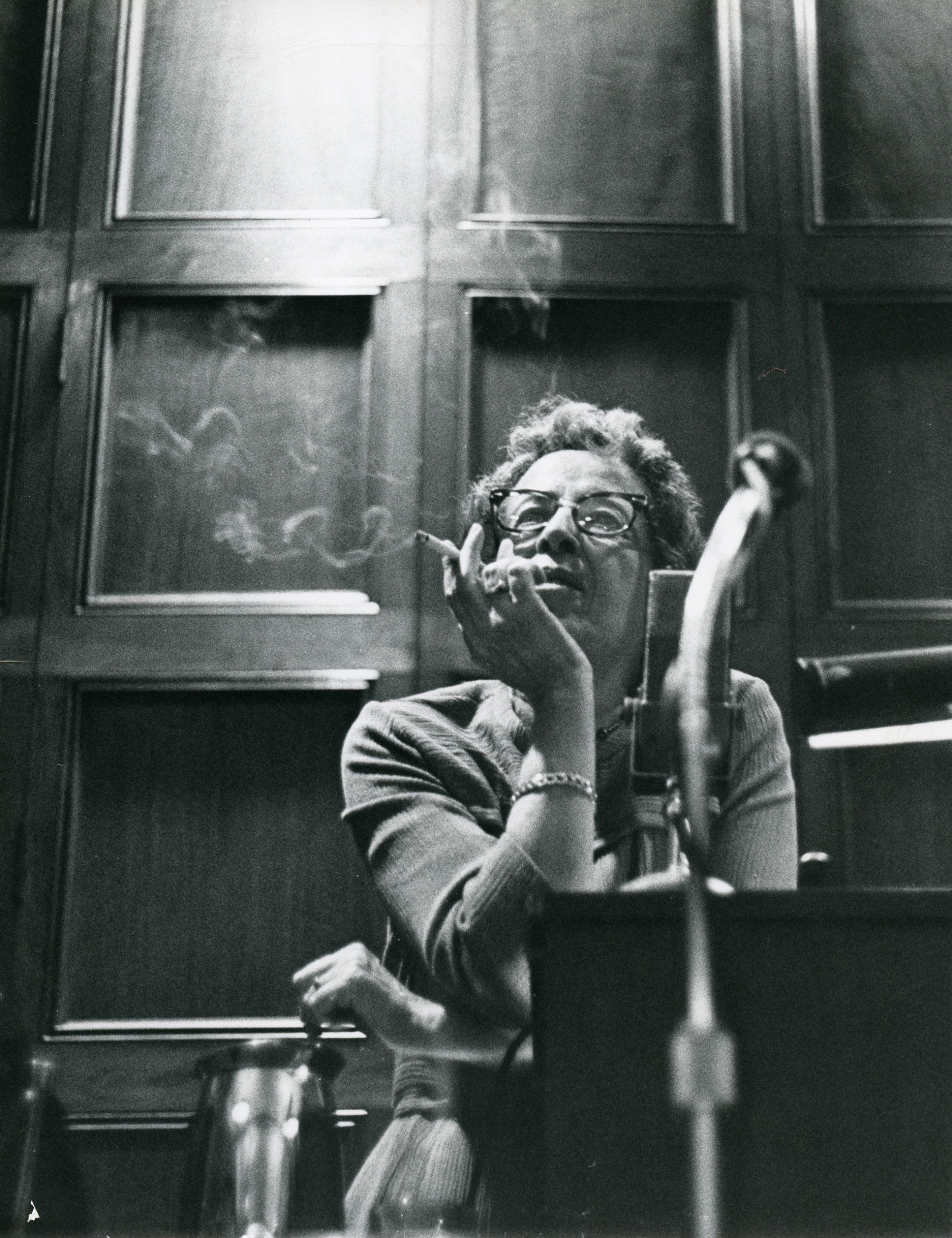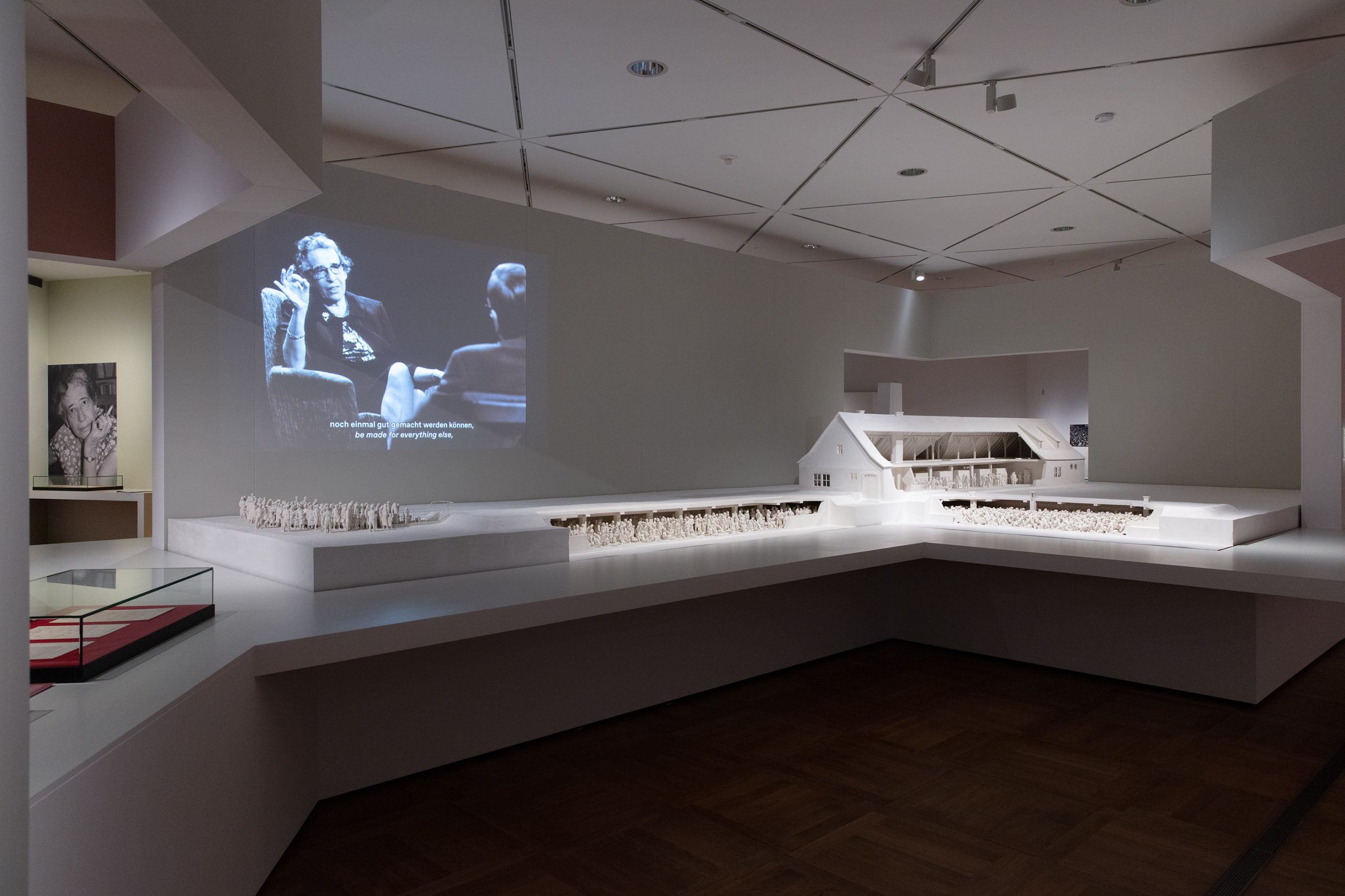For one more month, an exhibition about Hannah Arendt is on show in the Deutsches Historisches Museum in Berlin. Although I knew the name of this famous philosopher and author who fled Nazi Germany, I wanted to find out more about her after having recently visited two concentration camps and read a haunting survivor’s account in graphic novel format.
One of the landmark photographs of Arendt (right) captures the imposing presence of her person. Indeed, this is one of the accomplishments of the exhibition: it gives a full picture of Arendt as a person, from her early scholarship through many decades of important and controversial engagements in Germany, the USA, and Israel. One of my favorite parts of the exhibition is the videos of Arendt speaking in interviews, precisely because they show the person behind the momentous social philosophies she formulated.
Another memorable exhibit sticks in my mind (below). This is the model of the extermination complex at Auschwitz, modeled by Polish sculptor Mieczyslaw Stobiers. It is juxtaposed here with Arendt’s work about the Nazi state as a model of totalitarianism. Stobiers made this piece for this museum in 1994-95, nearly fifty years after he made his first model of it. During those many years he made even more. To me this was a heartrending relic of a life irrevocably affected by Nazism, and a lifetime spent painstakingly commemorating it. It seems like it must be horrible for the sculptor to relive each detail of this godawful place, not just once but with every new model – and yet maybe there is not just trauma, but also therapy in that act.
What I missed in this exhibition was a clear statement about what makes Arendt so important, and what her thoughts or philosophical formulations really were. Maybe the curators assume that we know that already, but I don’t – or not beyond some key terms like the “banality of evil.” Presenting these at the beginning would have helped me understand the wide-ranging chronological and thematic sections to come, starting with German-Jewish salon culture, extending through Arendt’s view of colonialism, to her famous report on the Eichmann trials, and her confrontation with 1950s American racism and German post-war revisionism. Maybe Arendt’s life is too much to sum up in an exhibition, no matter how expansive. But this show does a good job of introducing the range of subjects that Arendt managed to influence in her lifetime, not to mention the many controversies she sparked.
Even more, I would have liked a clear statement linking Arendt’s work with present-day issues. The connection is doubtless in the curators’ minds – Arendt’s words can be eerily contemporary! But why not stand up and say it out front, right in the title of the show? “Hannah Arendt and the Twentieth Century” should actually be “Hannah Arendt and the Twenty-First Century.” Better, it could drop the lame conjunction “and” and take a stand instead:
Hannah Arendt: Chilling Lessons for the Twenty-First Century
In any event, the exhibition inspired me to read Arendt’s groundbreaking The Origins of Totalitarianism and Eichmann in Jerusalem. Sadly I didn’t see these works by Arendt in the museum shop – only books of her correspondence, and books about her. I look forward to getting hold of them elsewhere.


